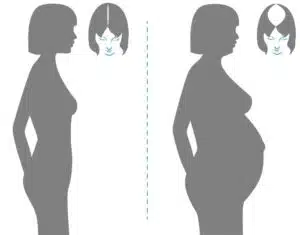Hair loss is considered one of the most annoying problems for women, as it greatly affects their self-confidence, and increases their feelings of shyness and anxiety when dealing with others, and this discomfort prompts many women to constantly search for ways to hide this defect and find effective solutions to get rid of the problem
Hair transplantation is often the first option that comes to mind, especially in advanced cases of hair loss, and men also face the problem of hair loss, albeit for different reasons and circumstances. In this article, we will review the most important causes of hair loss in women and how to treat it in detail
Causes of hair loss in women
There are many reasons that lead to hair loss in women, the most prominent of which areHereditary baldness: Hereditary baldness is considered one of the most common types of hair loss in women, and it is hereditary and is passed on from one generation to another
Autoimmune diseases: Some diseases that In which the immune system attacks the body's cells, such as alopecia areata, it may cause hair loss
Hormonal changes: Changes in hormone levels, especially during periods such as pregnancy or menopause, may lead to hair loss
Drug use: Some medications, such as chemotherapy drugs used to treat cancer, may be a direct cause of hair loss
Aging: As you age, hair becomes more susceptible to falling out due to weak follicles
Pregnancy: Many women suffer from hair loss after childbirth due to hormonal changes
Psychological stress: Continuous psychological stress can lead to significant hair loss
Severe diet: Lack of nutrition and vitamins, especially iron, plays a major role in hair loss
Iron deficiency: Anemia caused by iron deficiency is one of the most common factors that lead to hair loss
Male pattern baldness: Also known as androgenetic alopecia, it is one of the main causes of hair loss in women and men alike Whether
What is androgenetic alopecia?

Androgenetic alopecia, or what is known as male pattern baldness, is one of the patterns that appear in both men and women. It is characterized by the shrinkage of thick hair follicles to become thin and prone to falling out over time. Despite the similarity between men and women in the pattern of hair loss, there are fundamental differences between the sexes
Differences between men and women in androgenetic alopecia
In men: Baldness appears as large gaps in the front of the head and crown area In women: Hair gaps are less visible and smaller than in men, which makes it difficult to detect baldness in women in its early stagesGrades of androgenetic alopecia in women
In addition, there are three basic degrees of androgenetic alopecia in women that differ in severity and extent Diffuse (progressive) hair loss Localized (stable) hair loss Hair loss in male pattern Diffuse (progressive) hair loss: This type of hair loss is characterized by diffuse thinning in the crown area, and may extend to include the entire scalp while preserving the frontal hairline According to the severity of hair loss, the development of baldness in women can be classified on the **Ludwig** scale as follows: Ludwig I, II, III. Ludwig I: This type is known as the first and most moderate stage of hair loss. Thinning in the crown area is mild
Ludwig II: At this stage, hair thinning in the crown area is more severe and is accompanied by a significant decrease in hair density and a widening of the hairline in the middle of the scalp. If the donor area contains healthy hair follicles, hair transplantation may be a suitable option at this stage.

Ludwig III: At this stage, the frontal hairline is still preserved, but the crown area shows significant hair loss, with the hairline widening significantly and the hair becoming so thin that it is difficult to hide the scalp. If the patient has sufficient hair reserves in the donor area, hair transplantation may be the only solution.

